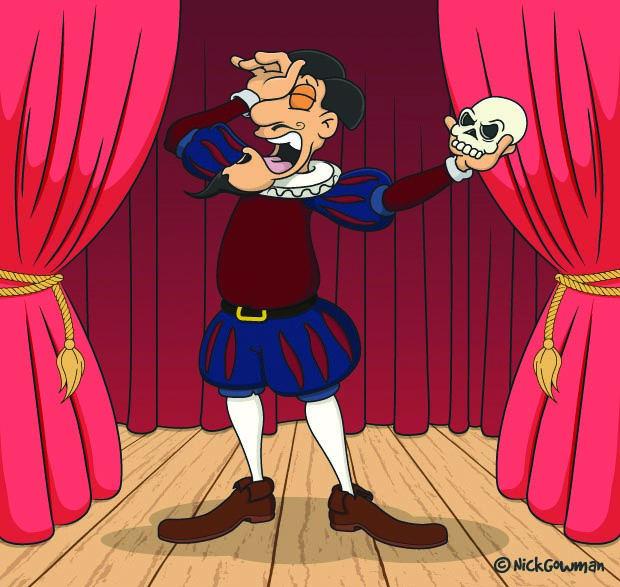Soliloquy comes from the Latin soliloquium, which means talking to oneself
-Roopa Banerjee
 Soliloquy is expressing thoughts aloud, without addressing another person or persons. It comes from the Latin word soliloquium, which means ‘talking to oneself.’
Soliloquy is expressing thoughts aloud, without addressing another person or persons. It comes from the Latin word soliloquium, which means ‘talking to oneself.’
This literary form was popularised in the 16th century by the bard William Shakespeare. An example is when Romeo declares his love for Juliet in the legendary balcony scene. “But soft! What light through yonder window breaks?” or when Macbeth is contemplating killing Duncan, “Is this a dagger I see before me?”
Many people equate a soliloquy with monologue. But there is a big difference. In a soliloquy, the speaker is addressing himself/herself, while in a monologue the speaker is addressing an individual or others. A soliloquy is when inner sentiments are expressed aloud without addressing anyone in particular. In literature, soliloquies serve the purpose of protagonists expressing thoughts and emotions not to be disclosed to others.
Soliloquy enables writers to create dramatic irony, a plot stratagem to highlight a difference between a character’s knowledge of a situation, and of the audience. The audience is aware of some crucial piece of evidence, while the characters most affected by the information, are clueless about it.
Hamlet’s Act III, Scene I soliloquy is perhaps the most famous in English literature.
To be, or not to be — that is the question:
Whether ’tis nobler in the mind to suffer
The slings and arrows of outrageous fortune
Or to take arms against a sea of troubles
And by opposing end them.
Though soliloquy was a staple in Elizabethan plays, it’s rare in modern dramatics. However some modern films have used soliloquy to great acclaim. For instance Travis Bickle’s soliloquy in the Hollywood movie Taxi Driver directed by Martin Scorcese is iconic and oft parodied in popular culture.
The Bollywood movie Devdas in its Bimal Roy avatar as well as the Sanjay Leela Bhansali version has intense soliloquies by the protagonist.
Another modern example is the television serial House of Cards where Frank Underwood occasionally directly addresses soliloquies to the camera when other characters are not on screen or within earshot.
There are also several fine examples of soliloquies in Disney films. Dory’s tear-jerker soliloquy is a memorable finale of Finding Nemo. Similarly, Anton ego in Ratatouille and Rapunzel’s lines in Tangled are classic examples of modern soliloquies.
Writers select characters with intense feelings and/or individuals confronted with tough decisions and dilemmas to emote soliloquies. This achieves the dual purpose of helping the audience/reader understand what’s in the character’s mind and to earn her the audience’s sympathy.
Exercise:
Identify these famous soliloquies of English literature:
- It must be by his death: and for my part, I know no personal cause to spurn at him, But for the general. He would be crown’d How that might change his nature, there’s the question.
- O, she doth teach the torches to burn bright! It seems she hangs upon the cheek of night Like a rich jewel in an Ethiope’s ear; Beauty too rich for use, for earth too dear!
- Tomorrow, and tomorrow, and tomorrow, Creeps in this petty pace from day to day, To the last syllable of recorded time; And all our yesterdays have lighted fools The way to dusty death. Out, out, brief candle!
Answer:
- Julius Ceaser 2. Romeo and Juliet 3. Macbeth.
Also read: Ride the magic carpet of Imagery

























